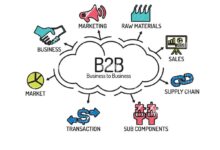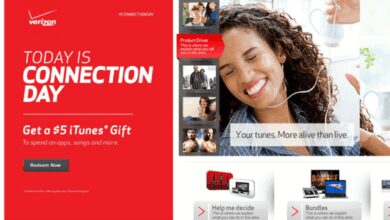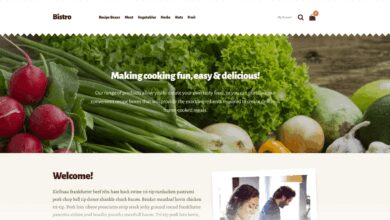B2B Examples: 7 Powerful Real-World Success Stories Revealed
Ever wondered how companies sell to other companies? Dive into these real B2B examples that reveal how industry giants and startups alike dominate the business landscape with smart strategies and lasting partnerships.
B2B Examples: Understanding the Foundation of Business-to-Business Sales

Business-to-business (B2B) transactions form the backbone of the global economy. Unlike business-to-consumer (B2C) models, B2B involves companies selling products or services to other organizations, often in bulk and with longer sales cycles. These relationships are built on trust, value, and long-term contracts.
What Exactly Is a B2B Model?
The B2B model refers to any commercial transaction between two businesses rather than between a business and an individual consumer. This can include manufacturers selling raw materials to producers, software companies licensing platforms to enterprises, or logistics firms providing supply chain solutions.
- Transactions are typically larger in volume and value.
- Decision-making involves multiple stakeholders.
- Sales cycles are longer and more complex.
According to Investopedia, B2B commerce accounts for over $12 trillion in global sales annually, dwarfing B2C in sheer economic impact (Investopedia – B2B Definition).
Key Differences Between B2B and B2C
While both models aim to generate revenue, their approaches differ significantly. B2B marketing focuses on logic, ROI, and efficiency, while B2C leans on emotion, branding, and impulse buying.
- B2B buyers seek solutions that improve operations or reduce costs.
- B2C customers are driven by personal needs and desires.
- B2B relationships often involve contracts, service-level agreements (SLAs), and dedicated account managers.
“In B2B, you’re not just selling a product—you’re selling a partnership.” — Marc Benioff, CEO of Salesforce
Top 7 Real-World B2B Examples That Define Industry Standards
Exploring concrete B2B examples helps illustrate how companies create value through strategic business relationships. These cases span industries from tech to manufacturing and highlight innovation, scalability, and customer-centric models.
1. Salesforce: Revolutionizing CRM for Enterprises
Salesforce is one of the most iconic B2B examples in the SaaS (Software as a Service) space. It provides cloud-based customer relationship management (CRM) tools that help businesses manage sales, marketing, and customer service operations.
- Offers modular solutions like Sales Cloud, Service Cloud, and Marketing Cloud.
- Used by over 150,000 companies worldwide, including Amazon and Toyota.
- Generates over $30 billion in annual revenue, primarily from enterprise subscriptions.
Salesforce’s success lies in its ability to integrate with other enterprise systems and offer customizable workflows. Its AppExchange marketplace allows third-party developers to build and sell complementary tools, expanding its ecosystem. Learn more at Salesforce Official Site.
2. Amazon Web Services (AWS): Powering Global Digital Infrastructure
AWS is a textbook example of B2B scalability and innovation. As the world’s leading cloud computing platform, AWS provides computing power, storage, and AI tools to businesses of all sizes.
- Supports major companies like Netflix, Airbnb, and the U.S. Department of Defense.
- Offers over 200 fully featured services across data centers globally.
- Accounts for over 30% of the global cloud infrastructure market.
AWS enables startups to scale rapidly without investing in physical servers and helps enterprises modernize legacy systems. Its pay-as-you-go model makes it accessible and cost-effective. Explore AWS capabilities at Amazon Web Services.
3. HubSpot: Inbound Marketing and Sales Automation
HubSpot has redefined how B2B companies attract, engage, and retain customers through its inbound methodology. It offers an integrated suite of marketing, sales, and customer service tools.
- Used by over 180,000 customers in 120+ countries.
- Focuses on content-driven lead generation and automation.
- Provides free tools and educational resources to build brand authority.
HubSpot’s inbound approach emphasizes value-first engagement, making it a favorite among mid-market and growing businesses. Its certification programs and community forums further strengthen customer loyalty. Visit HubSpot.com for resources and case studies.
B2B Examples in Manufacturing and Supply Chain
The manufacturing sector is rich with B2B examples where suppliers, distributors, and OEMs (Original Equipment Manufacturers) collaborate to deliver finished goods. These relationships are often long-term and deeply integrated.
Caterpillar Inc.: Heavy Machinery and Global Distribution
Caterpillar is a global leader in construction and mining equipment, diesel and natural gas engines, and industrial turbines. It operates primarily through a B2B model, selling to contractors, governments, and energy companies.
- Partners with dealers in over 180 countries for localized support.
- Offers financing and maintenance services through Cat Financial.
- Uses IoT-enabled machines for predictive maintenance and fleet management.
Caterpillar’s Cat Connect technology allows clients to monitor equipment performance in real time, reducing downtime and improving productivity. This data-driven service model enhances customer retention and adds recurring revenue streams.
Siemens: Industrial Automation and Digitalization
Siemens is a German multinational powerhouse in industrial automation, energy, and healthcare. Its B2B offerings include smart factory solutions, digital twins, and AI-driven process optimization.
- Helps manufacturers transition to Industry 4.0 with MindSphere IoT platform.
- Collaborates with automotive, aerospace, and pharmaceutical firms.
- Generated €77.8 billion in revenue in 2023, mostly from B2B contracts.
Siemens’ focus on digital transformation makes it a critical player in smart manufacturing. Its partnerships with companies like BMW and Boeing showcase how B2B technology drives innovation across sectors. Learn more at Siemens Global.
B2B Examples in Technology and Software-as-a-Service (SaaS)
The rise of SaaS has transformed B2B dynamics, enabling scalable, subscription-based models that deliver continuous value. These B2B examples highlight how software companies serve enterprise clients with cloud-native solutions.
Microsoft Azure: Enterprise Cloud and AI Integration
Microsoft Azure competes directly with AWS as a leading cloud platform for businesses. It offers computing, analytics, storage, and AI services tailored for enterprise needs.
- Integrated with Microsoft 365, Dynamics 365, and Power Platform.
- Used by 95% of Fortune 500 companies.
- Supports hybrid cloud environments for seamless on-premise and cloud operations.
Azure’s strength lies in its compatibility with existing Microsoft ecosystems, making adoption easier for large organizations. Its AI tools, like Azure OpenAI Service, enable businesses to deploy advanced language models securely. Discover more at Microsoft Azure.
Zoom: From Consumer App to B2B Communication Powerhouse
While Zoom gained fame during the pandemic, its core growth has been in the B2B space. Enterprises use Zoom for virtual meetings, webinars, contact center solutions, and team collaboration.
- Over 10,000 customers have more than 10,000 employees using Zoom.
- Offers Zoom Rooms, API integrations, and enterprise security features.
- Revenue from education and enterprise sectors grew by 40% year-over-year in 2023.
Zoom’s shift from a simple video tool to a comprehensive communication platform exemplifies how B2B companies can pivot and scale. Its integration with CRM and productivity tools enhances workflow efficiency. See enterprise solutions at Zoom for Business.
B2B Examples in Logistics and Supply Chain Services
Efficient logistics are critical for global commerce, and several companies have built successful B2B models around transportation, warehousing, and fulfillment. These B2B examples demonstrate how service providers enable other businesses to operate smoothly.
UPS: Global Shipping and Supply Chain Solutions
United Parcel Service (UPS) is more than a delivery company—it’s a full-service logistics provider for businesses worldwide. From e-commerce fulfillment to cold-chain logistics, UPS offers tailored B2B solutions.
- Handles over 24 million packages per day.
- Provides freight forwarding, customs brokerage, and inventory management.
- Partners with Shopify, SAP, and Oracle for seamless integration.
UPS’s technology platform, UPS Supply Chain Solutions, allows clients to track shipments, optimize routes, and manage returns efficiently. Its sustainability initiatives, like electric delivery vehicles, also appeal to eco-conscious enterprises. Learn more at UPS Business Solutions.
DHL: International Logistics and Industry-Specific Services
DHL, part of Deutsche Post, is a global leader in international express delivery and supply chain management. It serves industries ranging from healthcare to aerospace with specialized logistics.
- Operates in over 220 countries and territories.
- Offers temperature-controlled shipping for pharmaceuticals.
- Provides end-to-end supply chain visibility with DHL Resilience360.
DHL’s ability to handle complex, regulated shipments makes it a trusted B2B partner. Its digital tools enable real-time tracking and risk assessment, crucial for global operations. Explore services at DHL Global.
B2B Examples in Financial Technology (FinTech)
FinTech companies are transforming how businesses manage money, pay vendors, and access capital. These B2B examples show how financial services are becoming more accessible, automated, and integrated.
Stripe: Payment Infrastructure for Internet Businesses
Stripe provides the technical backbone for online payments, enabling businesses to accept credit cards, manage subscriptions, and handle global payouts.
- Used by companies like Shopify, Slack, and Instacart.
- Offers fraud detection, tax calculation, and invoicing tools.
- Supports over 135 currencies and multiple payment methods.
Stripe’s API-first approach allows developers to embed payment functionality directly into apps and websites. Its focus on developer experience has made it a favorite among tech startups and enterprises alike. Visit Stripe.com for documentation and pricing.
Adyen: Unified Commerce Platform for Global Enterprises
Adyen is a Dutch payment processor that offers a single platform for online, in-store, and mobile payments. It serves large retailers, airlines, and digital platforms.
- Customers include Meta, Uber, and Spotify.
- Processes over $500 billion in payment volume annually.
- Provides real-time analytics and fraud prevention.
Adyen’s unified commerce model eliminates the need for multiple payment providers, reducing complexity and improving reconciliation. Its direct relationships with card networks ensure better transaction success rates. Learn more at Adyen Official Site.
B2B Examples in Marketing and Advertising
Marketing agencies and ad tech platforms play a crucial role in helping businesses reach their target audiences. These B2B examples highlight how companies provide strategic and technical support to other brands.
Google Ads: Targeted Advertising for Business Growth
Google Ads is one of the most powerful B2B advertising platforms, allowing businesses to reach customers through search, display, video, and app ads.
- Over 80% of marketers use Google Ads for lead generation.
- Offers advanced targeting based on intent, demographics, and behavior.
- Integrates with Google Analytics for performance tracking.
For B2B companies, Google Ads is essential for capturing high-intent search traffic. Its keyword bidding system allows precise budget control, making it scalable for businesses of all sizes. Explore campaigns at Google Ads.
LinkedIn Marketing Solutions: B2B Lead Generation Powerhouse
LinkedIn is the premier social platform for B2B marketing. Its advertising and recruitment tools help companies connect with professionals, decision-makers, and talent.
- Over 20 million B2B decision-makers use LinkedIn monthly.
- Offers Sponsored Content, InMail, and Lead Gen Forms.
- Used by Salesforce, IBM, and Microsoft for targeted outreach.
LinkedIn’s granular targeting—by job title, industry, company size, and skills—makes it unmatched for B2B lead generation. Its content ecosystem also supports thought leadership and brand building. Discover tools at LinkedIn for Business.
Emerging Trends in B2B Examples: The Future of Business Sales
The B2B landscape is evolving rapidly due to digital transformation, AI, and changing buyer expectations. These trends are shaping the next generation of B2B examples.
AI-Driven Personalization and Sales Automation
Artificial intelligence is revolutionizing how B2B companies engage with prospects. From chatbots to predictive analytics, AI enhances efficiency and personalization.
- AI-powered CRM systems predict customer churn and recommend next steps.
- Chatbots handle initial inquiries, freeing up sales teams for high-value tasks.
- Dynamic pricing models adjust based on demand and customer behavior.
Companies like Gong and Clari use AI to analyze sales calls and forecast revenue, giving teams data-driven insights. This shift toward intelligent automation is becoming a standard in high-performing B2B organizations.
Sustainability and Ethical Sourcing as B2B Differentiators
More businesses are prioritizing sustainability in their procurement decisions. B2B providers that offer eco-friendly products, carbon reporting, and ethical supply chains gain a competitive edge.
- Apple requires suppliers to use 100% renewable energy.
- Unilever’s Sustainable Living Plan influences its vendor selection.
- Carbon accounting platforms like Persefoni help B2B firms measure emissions.
Sustainability is no longer optional—it’s a business imperative. Companies that align with ESG (Environmental, Social, Governance) goals attract long-term partners and investors.
The Rise of Subscription and Usage-Based Models
Traditional licensing is giving way to flexible pricing models. B2B examples like AWS, Salesforce, and Zoom thrive on subscriptions and pay-per-use structures.
- Reduces upfront costs for buyers.
- Creates predictable revenue for sellers.
- Encourages continuous product improvement and customer retention.
This shift reflects a move from ownership to access, emphasizing ongoing value delivery. As customer expectations evolve, usage-based pricing will become even more prevalent.
What are B2B examples?
B2B examples are real-world cases where one business sells products or services to another. These include companies like Salesforce, AWS, and Siemens, which provide software, cloud infrastructure, and industrial solutions to other organizations.
Why are B2B examples important for businesses?
Studying B2B examples helps companies understand successful strategies, sales models, and customer engagement techniques. They provide benchmarks for innovation, scalability, and market positioning.
How do B2B sales differ from B2C sales?
B2B sales involve longer decision cycles, multiple stakeholders, and a focus on ROI and efficiency. B2C sales are typically faster, emotionally driven, and target individual consumers.
What industries have the most B2B examples?
Tech, manufacturing, logistics, finance, and marketing are rich with B2B examples. Sectors that rely on supply chains, enterprise software, or professional services often operate primarily on B2B models.
Can small businesses benefit from B2B examples?
Absolutely. Small businesses can learn from B2B examples to improve their sales processes, adopt scalable technologies, and build strategic partnerships—even if they serve niche markets.
From tech giants like Salesforce and AWS to logistics leaders like UPS and DHL, these B2B examples showcase the diversity and power of business-to-business relationships. They highlight how value, innovation, and long-term partnerships drive success in the corporate world. As digital transformation accelerates, the lines between industries blur, and new models emerge, understanding these examples becomes crucial for any business aiming to grow and compete globally. Whether you’re a startup or an enterprise, learning from proven B2B strategies can help you build a resilient, customer-focused, and future-ready organization.
Further Reading:









